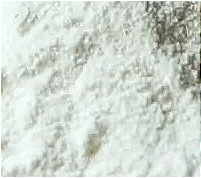| "Descrizione" by admin (19557 pt) | 2023-Aug-22 15:21 |
Acrylates/Steareth-20 methacrylate crosspolymer is a chemical compound, a cross-linked alkyl acrylate, a copolymer produced by an emulsion or solution polymerisation reaction. The polymer structure and properties of this ingredient can change depending on a number of variables such as the ratio of comonomers, the level of cross-linking and others.
The name defines the structure of the molecule
- "Acrylates". Refers to monomers derived from acrylic acid. They are commonly used in polymer production.
- "Steareth-20". It's a nonionic surfactant derived from the ethoxylation of stearyl alcohols. The number "20" indicates the average number of ethylene oxide units in the molecule.
- "Methacrylate" refers to monomers derived from methacrylic acid.
- "Crosspolymer" signifies that the polymer has cross-links between the polymer chains, giving the polymer a three-dimensional structure.
Description of raw materials used in production
- Acrylate monomers - Such as acrylic acid.
- Steareth-20 methacrylate - It's an ester of methacrylate combined with steareth-20, which in turn is derived from stearyl alcohol and ethylene oxide.
- Polymerization initiators - Chemicals that initiate the polymerization process when exposed to an energy source, like heat or UV light.
Step-by-step summary of industrial chemical synthesis process.
- Preparation - The acrylate monomers and steareth-20 methacrylate are mixed in desired proportions.
- Polymerization - Add the initiator and subject the mixture to appropriate conditions (such as heat or UV light) to start polymerization.
- Crosslinking formation - During polymerization, crosslinks form between the polymer chains, giving the polymer its gelifying and thickening properties.
- Purification - The polymer is purified to remove any unreacted monomers and other impurities.
- Quality Control - The polymer undergoes tests to check its properties and ensure it meets specifications.
It appears in the form of a white powder.

What it is used for and where
Cosmetics
Film-forming agent. It produces a continuous ultra-thin film with an optimal balance of cohesion, adhesion and stickiness on the skin or hair to counteract or limit damage from external phenomena such as chemicals, UV rays and pollution.
Commercial applications
Viscosity Enhancer. This polymer is used to increase the viscosity of cosmetic and skincare products.
Emulsion Stabilizer. Helps stabilize emulsions, preventing the separation of ingredients in formulations like creams and lotions.
Gelling Agent. Imparts a gel-like consistency to various products, making them thicker.
Suspending Agent. Helps to suspend insoluble particles, such as pigments or sunscreens, in liquid or semi-liquid formulations.
Film Former. Can form a thin film on the skin or hair, helping to lock in moisture or other beneficial ingredients.
| Evaluate |

